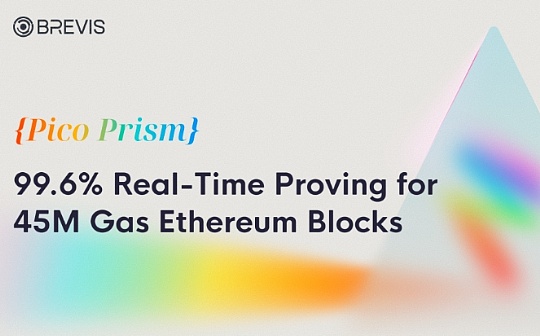
Author: Jack Inabinet Source: Bankless Translation: Shan Oppa, Bitchain Vision
Vitalik has put forward some bold new ideas for the future of Ethereum.
With Ethereum gas price dropping to an all-time low, the calculation fee is only a small part of the “gwei”, and the L1 transaction is currently only a few cents.As a result, many on-chain users began to question why they left L1, and ETH was far less expensive than its competitors, and people had unprecedented doubts about the feasibility of the “Rollup-centric” roadmap.
In recent days, Ethereum leadership has begun to express support for a strategic shift toward L1.With this momentum, over the weekend, Vitalik came up with an aggressive solution to achieve basic layer scalability: Give up EVM!
Today, we will explore how switching to RISC-V can help Ethereum regain its crown as a leading smart contract platform for cryptocurrencies.
What did Vitalik propose?
Ethereum co-founder Vitalik Buterin hopes to change the virtual machine language used to write smart contracts by replacing Ethereum virtual machine (EVM) with RISC-V to increase transaction speed and reduce costs on Ethereum L1.
While thoroughly redesigning Ethereum’s smart contract logic is undoubtedly radical, according to Buterin’s blog post on the Ethereum Magicians forum, these changes will address existing L1 scalability issues by eliminating unnecessary computations while maintaining backward compatibility with traditional EVM programs.
Vitalik’s proposal echoes Justin Drake’s vision of “Beam Chain” on simplifying the Ethereum consensus. Just as Beam Chain seeks to simplify the Ethereum consensus, the RISC-V execution layer will simplify and scale execution, potentially bringing 100 times more efficient.
Learn about Ethereum Beam Chain on BanklessThe consensus layer upgrade proposed by Ethereum Foundation researcher Justin Drake has a significant impact.
What is RISC-V?
RISC-V (pronounced “risk five”) is an open source “liquid instruction set computer” (RISC) architecture that can serve as a modular blueprint for building virtual machines.
A bit like the Linux operating system of computer hardware, RISC-V has been integrated by a number of top chip manufacturing companies including Intel and Arm as the preferred programming backbone for their CPUs.
RISC-V is considered to have many advantages over EVM when used in the context of blockchain-based virtual machines, such as:
-
Better zero-knowledge proof performance
-
Excellent support for existing code compilers and tools
-
Common backends that can support alternative coding languages, such as Solana’s Rust and Sui’s MOVE
Why give up EVM?
EVM has been faithfully serving Ethereum since its inception, but it has become a bulky bottleneck in recent expansion ambitions.Thorough reforms may be needed before L1 can achieve future assurance with zero-knowledge proof…
Many ZK-EVMs in production (such as Polygon Miden, Succinct SP1, Risc Zero RISC0) have compiled EVM bytecode to RISC-V at the bottom; giving developers direct access to the standard will benefit by further reducing proof time and enhancing flexibility in the encoding language.
Additionally, removing entrenched EVM technology debt, such as the smart contract removal feature “SELFDESTRUCT”, may require switching to a new virtual machine.
Implementing a backend that supports zero-knowledge proof seems to be the best solution to simplify the execution layer of Ethereum, and combined with the ability to support more coding languages, switching to RISC-V is expected to become a paradigm shift that establishes Ethereum as a clear leader in next-generation blockchain technology.








